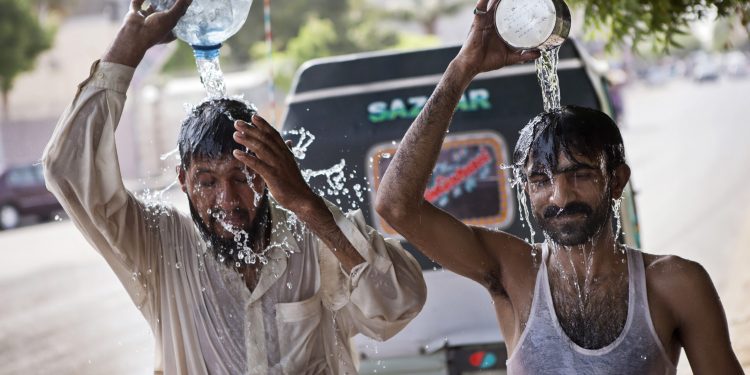New Delhi: A new study of more than 13,000 cities worldwide has found that the number of person-days in which inhabitants are exposed to extreme combinations of heat and humidity has tripled since the 1980s. The authors of the new study said, the trend, which now affects nearly a quarter of the world’s population, is the combined result of both rising temperatures and booming urban population growth. The study was published late Monday night India time in the ‘Proceedings of the National Academy of Sciences’.
To come up with a measure of person-days spent in such conditions of heat and humidity, the researchers matched up the weather data with statistics on the cities’ populations over the same time period. The analysis revealed that the number of person-days in which city dwellers were exposed went from 40 billion per year in 1983 to 119 billion in 2016 – a threefold increase. By 2016, 1.7 billion people were being subjected to extreme heat and humidity conditions on multiple days.
Over recent decades, hundreds of millions have moved from rural areas to cities, which now hold more than half the world’s population. There, temperatures are generally higher than in the countryside, because of sparse vegetation and abundant concrete, asphalt and other impermeable surfaces that tend to trap and concentrate heat-the so-called urban heat island effect.
“This has broad effects,” said the study’s lead author, Cascade Tuholske. “It increases morbidity and mortality. It impacts people’s ability to work, and results in lower economic output. It exacerbates pre-existing health conditions,” Tuholske added.
The researchers of the study combined infrared satellite imagery and readings from thousands of ground instruments to determine maximum daily heat and humidity readings in 13,115 cities, from 1983 to 2016. They defined extreme heat as 30 degrees Centigrade on the so-called ‘wet-bulb globe temperature’ scale, a measurement that takes into account the multiplier effect of high humidity on human physiology.
A wet-bulb reading of 30 is the rough equivalent of 106 degrees Fahrenheit on the so-called ‘real feel’ heat index-the point at which even most healthy people find it hard to function outside for long, and the unhealthy might become very ill or even die.
“Sheer urban population growth accounted for two-thirds of the exposure spike, while actual warming contributed a third. That said, the proportions varied from region to region and city to city,” Tuholske pointed out.
The population data was provided in part by Columbia’s ‘Centre for International Earth Science Information Network’, where Tuholske is based.
The most-affected cities tend to cluster in the low latitudes, but other areas are being affected, too. The worst-hit city in terms of person-days was Dhaka, the fast-growing capital of Bangladesh. It saw an increase of 575 million person-days of extreme heat over the study period.
“Its ballooning population alone – four million in 1983 to 22 million today – caused 80 per cent of the increased exposure. This does not mean that Dhaka did not see substantial warming-only that population growth was even more rapid. Other big cities showing similar population-heavy trends include Shanghai and Guangzhou, China; Yangon, Myanmar; Bangkok; Dubai; Hanoi; Khartoum and various cities in Pakistan, India and the Arabian Peninsula, a release said here.
On the other hand, some other major cities saw close to half or more of their exposure caused by warming climate alone versus population growth. These included Baghdad, Cairo, Kuwait City, Lagos, Kolkata, Mumbai, and other big cities in India and Bangladesh. The researchers found that 17 per cent of the cities studied added an entire month of extreme-heat days over the 34-year study period.
Because the period covered by the study ran only through 2016, the data did not include the series of record heat waves that raked the US Northwest and southern Canada this summer, killing hundreds of people.
The study is not the first to document the dangers of excessive urban heat, among others. Last year a separate Earth Institute team showed that combinations of heat and humidity literally beyond the limits of outdoor human survival have been briefly popping up around the world.
The newer study led by Tuholske adds to the picture by quantifying on a granular level how many people are being affected in each location, and the degree to which exposure is being driven by population versus climate. The authors say this information should help urban planners come up with better-targeted strategies to help citizens adapt.






































